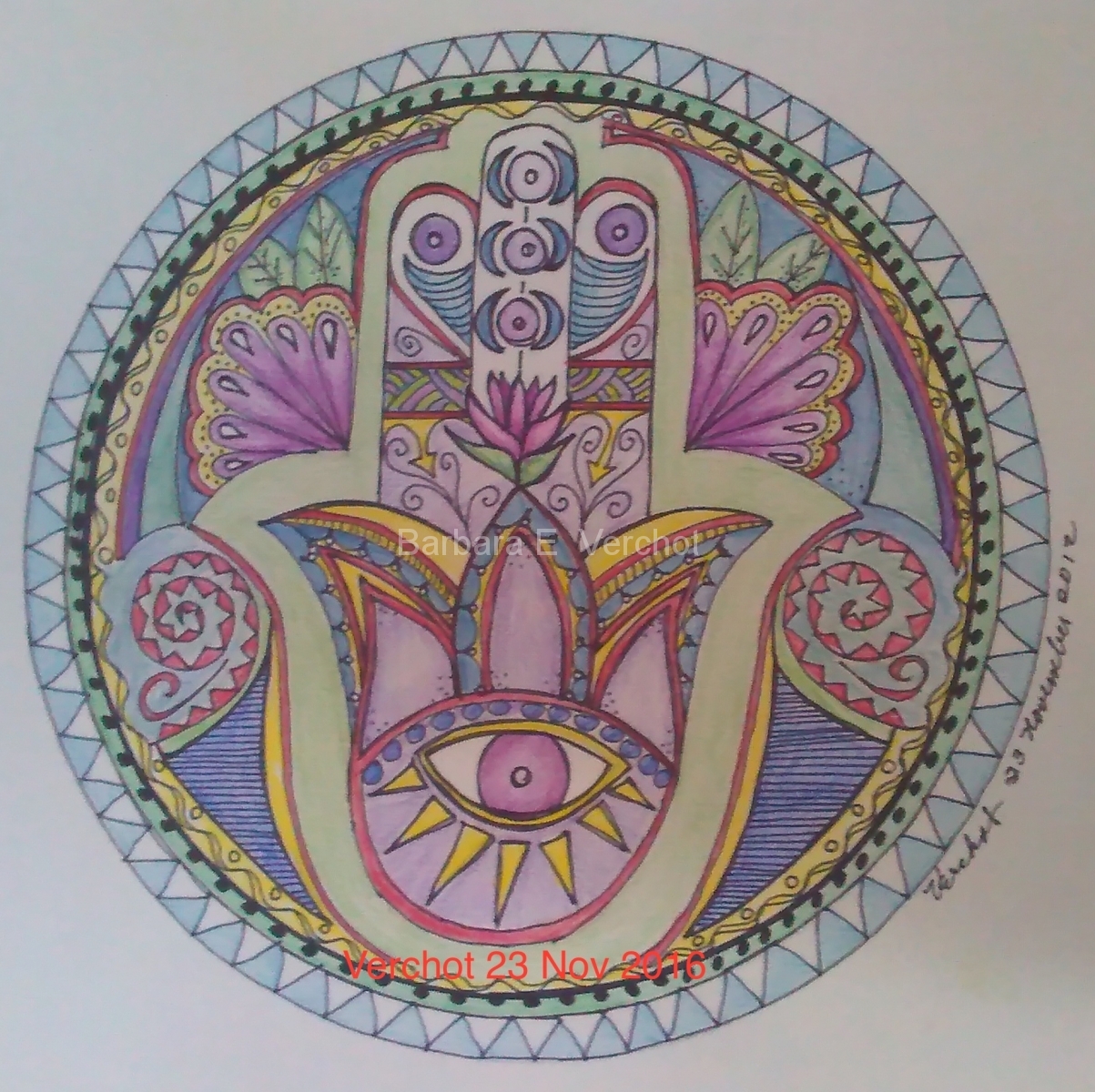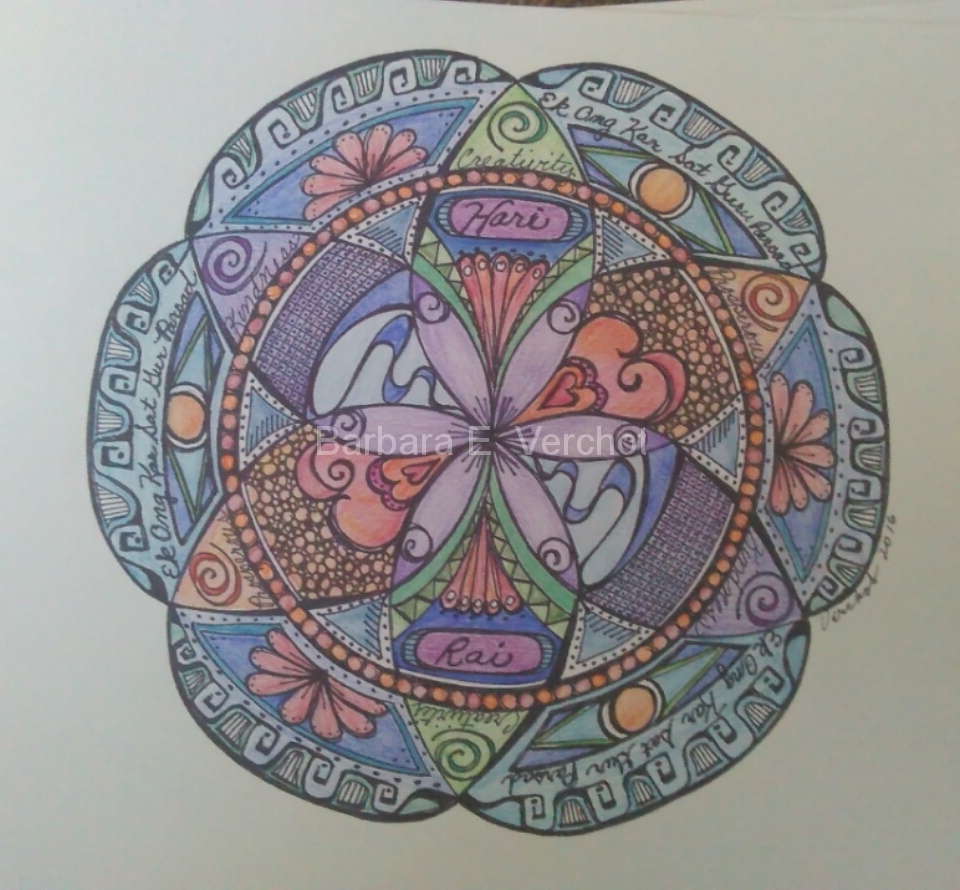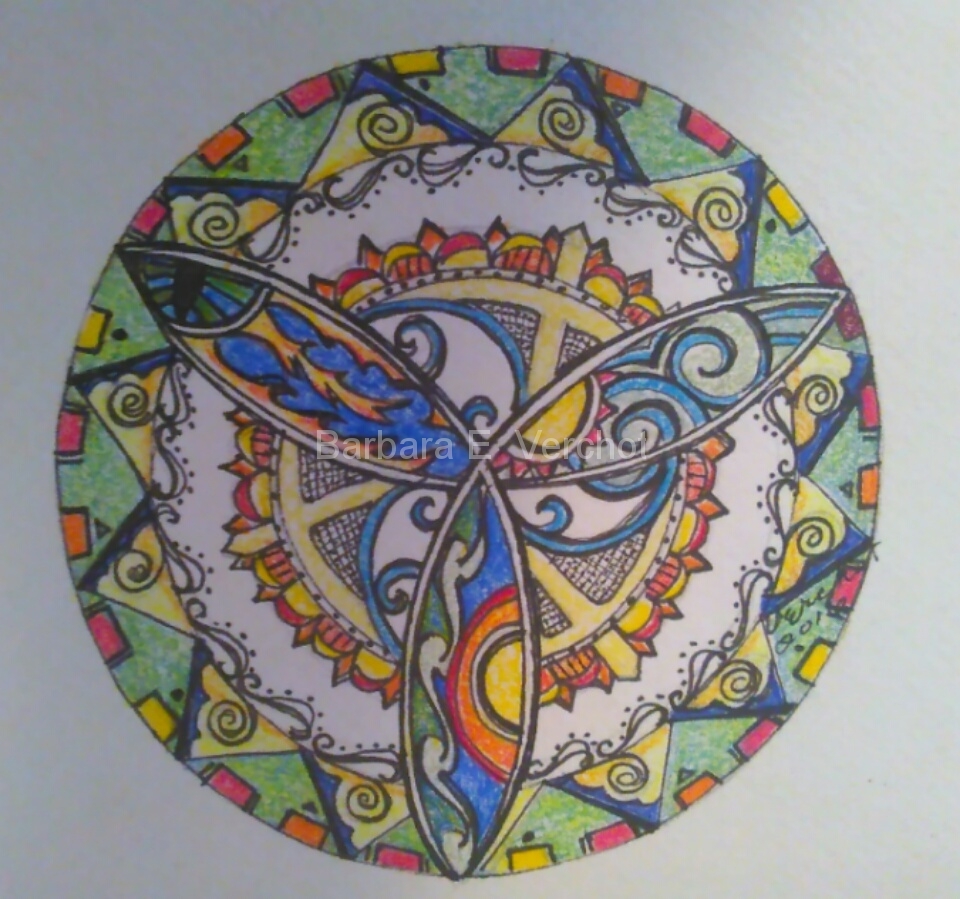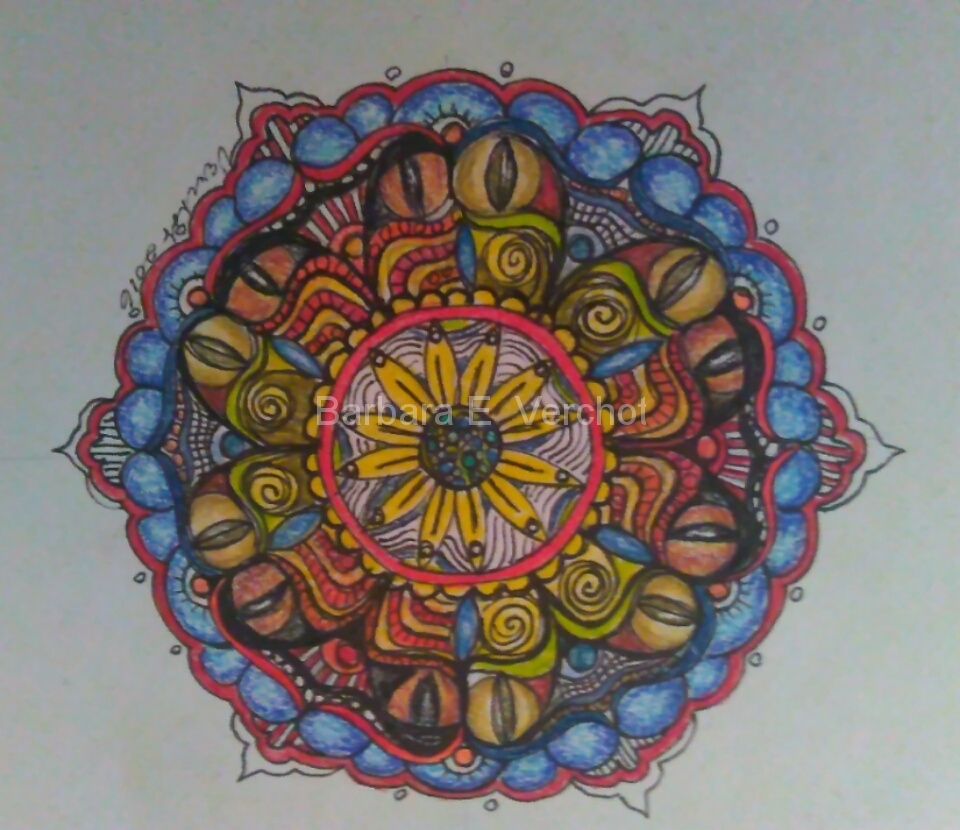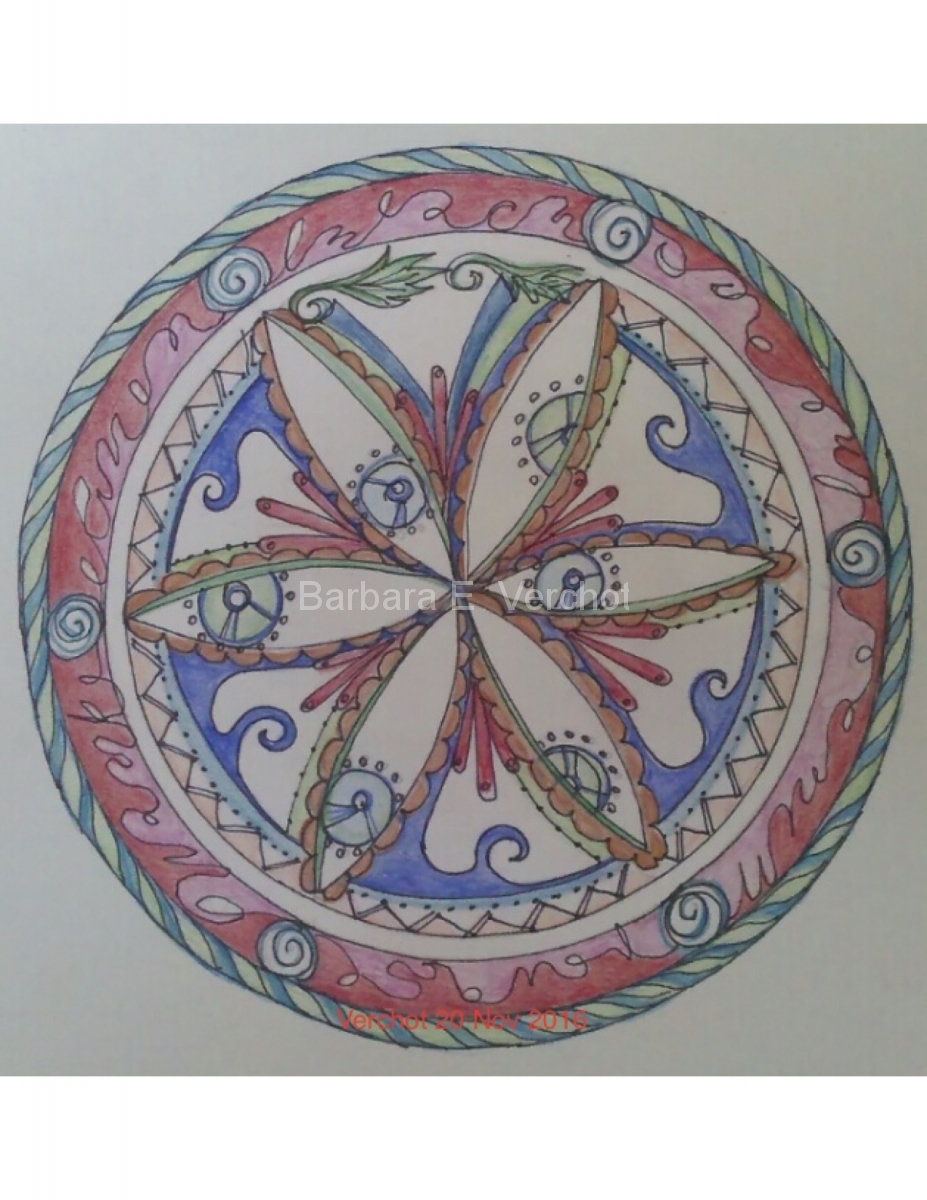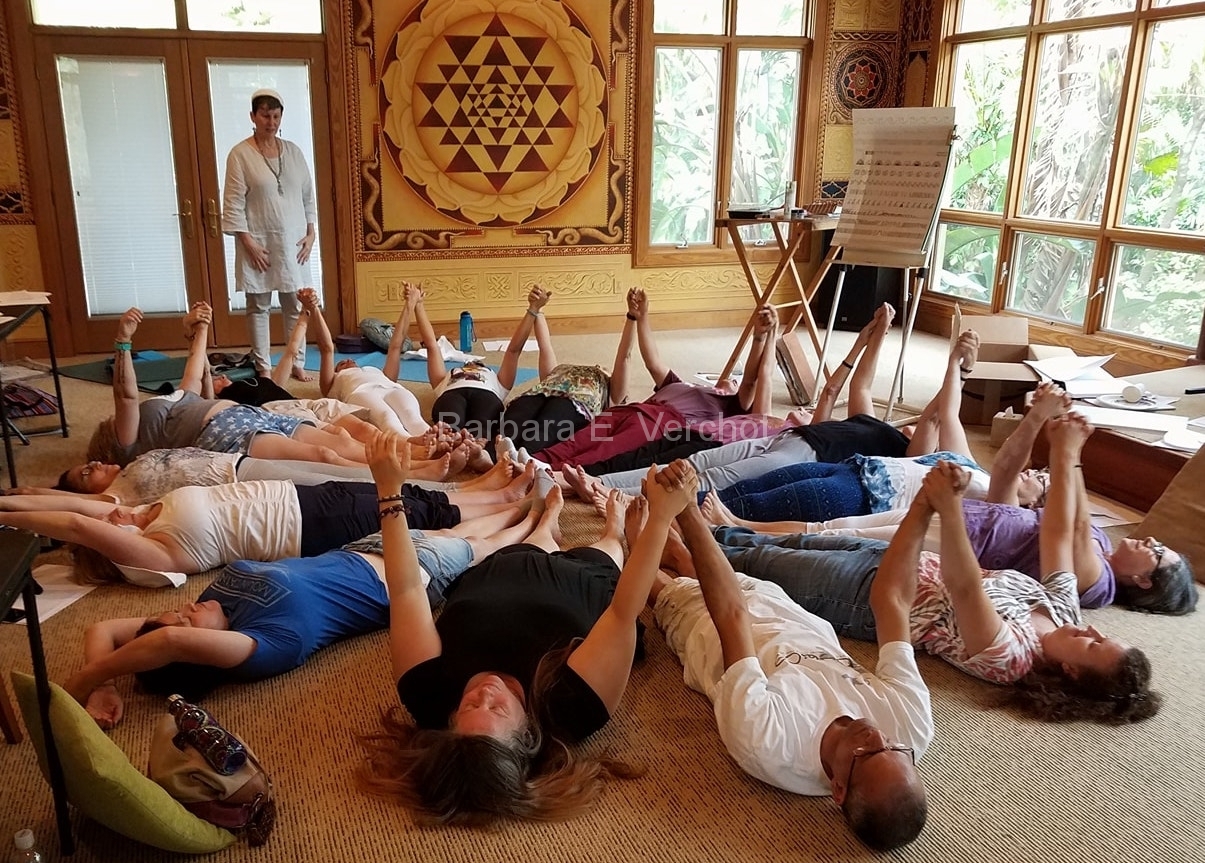I had to let myself be carried along by the current, without a notion of where it would lead me. When I began drawing the mandalas, however, I saw that everything, all the paths I had been following, all the steps I had taken, were leading back to a single point, namely to the mid-point.
[Jung, Memories, Dreams, Reflections, p.196]
The Sanskrit word “mandala” is loosely translated as circle. But, it represents far more than what this term for a simple geometric shape indicates. The mandala is a cosmic diagram for the infinite within and without each individual in both the material and the non-material worlds. The forms used in creating a mandala, appear in cultures around the world being used to represent the cosmic mysteries and being used as a portal to connect with Pure Consciousness.
Mandhu Khanna states that: “The art that has evolved out of the practice of tantrism embraces a wide variety of imagery, of which the yantra, ‘a geometrical diagram with abstract symbols’, is one of the most vivid and central.” This imagery has profound appeal on the “archtypical” level where the divine principles of both male and female energy join in union. This yoga of cosmic forces transcends the dualistic nature of material forms.
In the quote above, Jung documents this convergence of all paths into one single point, “the mid-point,” the bindu leading back to the supreme truth of the One. This is a merging of all directions in all dimensions of existence culminating in a single point in the field of Pure Consciousness which is eternal. Jung’s eloquent description gives a sense of this experience, but the limited nature of our languages falls short of transmitting this blissfulness when Oneness is achieved.
The Hindu Yantra and Buddhist Mandala share many characteristics and Mandalas are considered a subset of Yantra by some. Yantra comes from Vedic traditions and is the oldest of these artistic expressions. Although Buddhist Mandalas may differ from the geometric nature of the Yantra by containing various images, the religious intent remains the same.
In Trantic traditions, the human body is considered the most perfect and powerful Yantra of all being an extension of divine consciousness. The human IS divine consciousness.
In your bodies Mount Meru
encircled by continents;
the rivers are there too,
the seas, the mountains, the plains,
and the gods of the fields.
Prophets are to be seen in it, monks, places of pilgrimage
and the deities presiding over them.
The stars are there, and the planets,
and the sun together with the moon;
there too are the two cosmic forces;
that which destroys, that which creates;
and all the elements: ether
air and fire, water and earth.
Yes, in your body are al things
that exist in the three worlds,
all performing their prescribed functions
around Mount Meru;
he alone who knows this
is held to be a true yogi.
Siva Samhita translated by Jean Varenne in Yoga and the Hindu Tradition, p. 155
Human Mandala
COPYRIGHT © 2019 by Barbara E. Verchot








